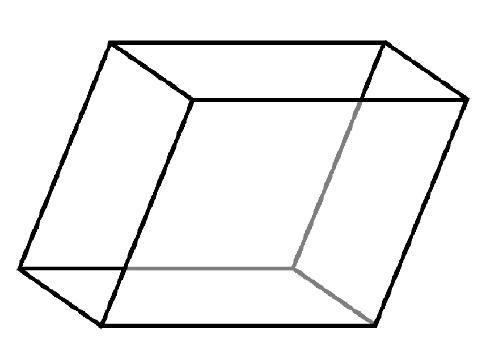![]()

The parallelepiped MD cell.
The parallelepiped (e.g. monoclinic or triclinic) cell is generally used in simulations
of crystalline materials, where its shape and dimension is commensurate with the unit cell
of the crystal. Thus for a unit cell specified by three principal vectors ![]() ,
, ![]() ,
, ![]() , the MD cell is defined in the DL_POLY_2
CONFIG file by the vectors (L
, the MD cell is defined in the DL_POLY_2
CONFIG file by the vectors (L![]() ,L
,L![]() ,L
,L![]() ), (M
), (M![]() ,M
,M![]() ,M
,M![]() ), (N
), (N![]() ,M
,M![]() ,N
,N![]() ), in which L,M,N are integers, reflecting the
multiplication of the unit cell in each principal direction. Note that the atomic
coordinate origin is the centre of the MD cell.
), in which L,M,N are integers, reflecting the
multiplication of the unit cell in each principal direction. Note that the atomic
coordinate origin is the centre of the MD cell.
The parallelepiped boundary condition can be used with the Ewald summation method.